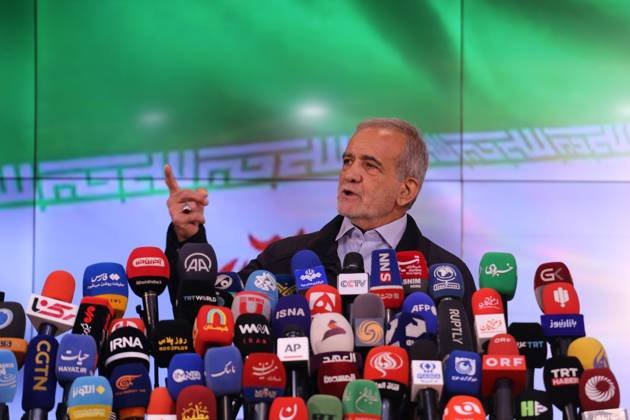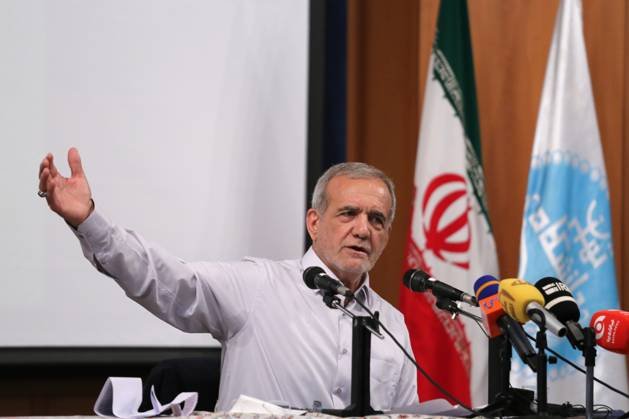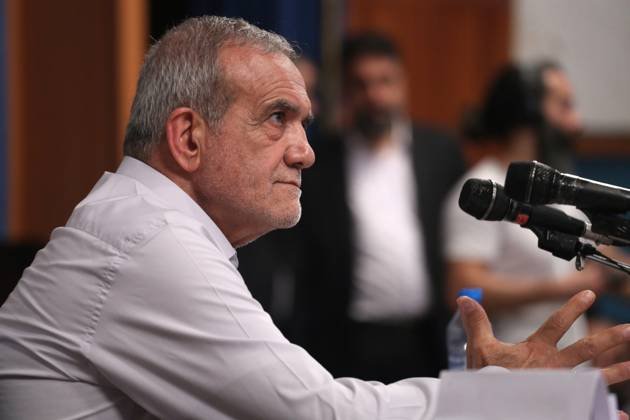In Short
| In Short |
| President Pezeshkian aims for 8% economic growth, requiring $100 billion in foreign investment. |
| Iran’s inflation stands at 40%, with sanctions posing significant challenges. |
| Pezeshkian’s first foreign visits will be to Iraq and the U.S. for the UN General Assembly. |
| The President advocates reviving the nuclear deal to ease sanctions and attract investment. |
| Pezeshkian, a reformist, focuses on diplomatic efforts and economic revitalization. |
Pezeshkian’s Vision for Iran’s Economy
In a live television interview-the first since he came to office-Iran’s new President Masoud Pezeshkian announced a lion ambition economic program to see the growth of his nation. The President, taking over power after the former President Ebrahim Raisi died in a helicopter crash, is seeking to achieve an annual economic growth of 8%, up from the current 4%. For this, Pezeshkian is eyeing $100 billion of foreign investment, which he sees as integral in turning around the ailing Iranian economy.
Economic Goals and Challenges
The Pezeshkian plan aims for as much as $250 billion, over half of which it hopes to provide internally. But foreign investment is crucial if the ambitious growth rate is to be achieved. The President said such a growth rate would absorb the current double-digit rates of inflation and joblessness. Inflation alone has reached an alarming 40% in Iran, partly due to years of sanctions imposed on the country by the international community.

First Steps: Pezeshkian’s Diplomatic Strategy
Sanctions have been a big barrier to Iran, with hundreds of entities, from the central bank to drone producers, heavily sanctioned over alleged support for the Iranian Revolutionary Guard and foreign militant groups. Pezeshkian went over these issues in his interview but affirmed that his administration was determined to fight inflation and seek good relations with their neighbors and the international community.
The Broader Context: Reviving the Nuclear Deal
His appointment comes at a time when Iran’s economy has been reeling since 2018, when then-U.S. President Donald Trump pulled out of the nuclear deal and reimposed sanctions on Tehran. During his presidential campaign, Pezeshkian advocated for a revival of the nuclear deal in order to appease sanctions and unlock economic potential for Iran.

A Reformist Approach to Governance
With his reformist policies and softer tone both internally and on the international stage, Pezeshkian’s presidency may be just what Iran needs as an about-face. Just how much he focuses on reviving the economy with such diplomatic efforts to mend international relations-especially with the U.S.-may well redefine Iran’s future. But if his ambitious plans are ever to see the light of day, he must first surmount the sharp, deeply ingrained challenges imposed by sanctions and attract foreign investment crucial for driving economic growth.
For Latest News Updates, Click Here.
